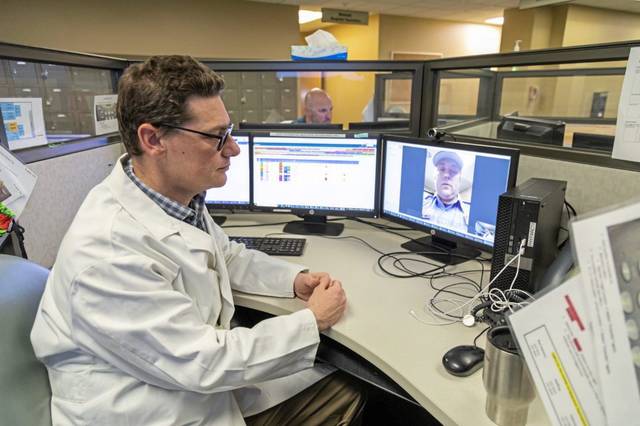How Pittsburgh paramedics are using video to assess potential covid-19 patients
Share this post:
UPMC and Pittsburgh paramedics for the first time are using secure video links that permit emergency room doctors to visually examine and assess potential covid-19 patients through smartphones and tablets.
The “tele-triage” system improves care for patients because doctors can actually see and communicate with them in real time while receiving their vital signs and determine if they should be hospitalized or can safely remain at home, according to UPMC Dr. Frank Guyette, an emergency medicine physician.
“It allows me to see the patient. It allows me to judge the patient’s interaction,” Guyette said Wednesday. “I can do elements of a physical examination that I couldn’t do over the telephone. It allows me to have a more complete interaction with them in their home.”
Pittsburgh Emergency Services Department paramedics have communicated with doctors over radios and cellphones for three decades, according to Assistant Chief Mark Pinchalk. He said telemedicine was the next step and has worked well since its implementation during the cornavirus pandemic.
“Here the physician can actually see the patient, they can eyeball them,” he said. “It’s more of a personal one-on-one interaction with the physician and the patients often feel better talking with a physician.”
Guyette said some patients are afraid of hospitals because of potential covid-19 exposures. Others want to be hospitalized even though it might be unnecessary.
The tele-triage system helps doctors determine what’s best for the patient, Guyette said. It also helps contain the spread of coronavirus.
He said people who are young with no underlying medical conditions can often remain at home in self-isolation without a hospital transport. In those cases, he said, UPMC doctors can schedule follow-up care with their primary doctor or through a virtual doctor’s visit.
Patients can also have a daily check-up through computer messaging. The computer sends messages to their phone, asking a series of questions. If the patient responds positive to something serious, the computer automatically connects them to a nurse, Guyette said.
He said STAT MedEvac helicopter crews and UPMC paramedic response units in Fayette, Washington and Allegheny counties also use the system, and UPMC intends to expand it to other areas.
He credited Pittsburgh EMS with helping to perfect it.
“None of this would have been possible without Pittsburgh EMS,” Guyette said. “They are innovators. They are willing to take on challenges. They worked with us to make this happen.”


